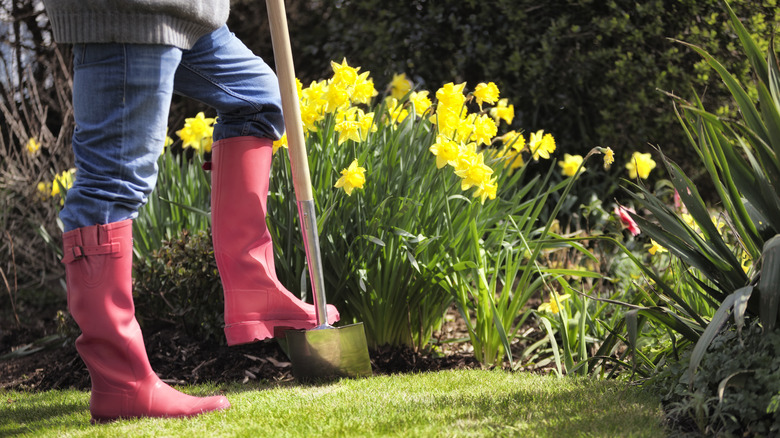Daffodils, with their many-colored blooms, are a delightful sight in early spring. However, there may come a time when you want to remove them from your garden. This could be due to overcrowding, changes in your garden design, or because of safety reasons (all parts of the plant are toxic to humans and pets). In this guide, we share some gardening advice focused on the various methods to safely and effectively remove daffodils. These include digging, withering, dividing, mowing, and using herbicides.
One of the most common and straightforward methods to remove daffodils is by digging them up. All you need is a garden fork or a shovel, a bucket, and gardening gloves. Gently insert the garden fork or shovel about six inches away from the base of the daffodil clump and carefully lift the bulbs out of the ground. Be cautious not to damage the bulbs during this process if you plan to preserve them. Once you’ve lifted out the bulbs, shake off any excess soil and separate any offsets or smaller bulbs from the main bulb. Lay the bulbs out in a cool, dry place for a few days to allow them to dry, and then store them until it’s time to replant them in the fall.
Withering and division

If you’re in no hurry to get rid of the daffodils in your garden and prefer a less labor-intensive approach, you can let the flowers wither naturally before removing the bulbs. After the daffodils have finished flowering, resist the urge to cut back or braid the foliage. Allow it to wither and turn yellow. This usually takes about six to eight weeks. Once the foliage has withered and turned yellow completely, you can gently uproot the bulbs using your hands or a small hand trowel. You can also kill daffodils outright by withholding water and sunlight. Simply cover them with a black plastic sheet and wait until they wither and die before removing the bulbs.
If your daffodils have become overcrowded and you’d like to just thin them out while expanding their presence in other areas of your garden, consider the division method. Make sure you do this when the foliage is totally yellow. Select healthy daffodil clumps that have been growing for several years and carefully dig them up to ensure the bulbs are intact. Gently separate the bulbs from each other and shake off the soil. You can then replant some of the daffodil bulbs in a new location, ensuring proper spacing, and store the rest for later planting or sharing with fellow gardeners.
Mowing and herbicide use

Two additional methods for removing daffodils are mowing and using an herbicide. Mowing is suitable for large areas with extensive daffodil plantings. After the daffodils have finished blooming and the foliage begins to yellow, you can mow them down with a lawnmower set to a low height. Doing this will weaken the bulbs over time, making them easier to remove. If you prefer a chemical approach, choose eco-friendly herbicides that are safe for the environment. Follow the manufacturer’s instructions carefully and apply the herbicide when the daffodils are actively growing but not in bloom — preferably on a hot, dry spring day. This method should be used with caution and only as a last resort as improper application can harm other plants in your garden.
Whether you want to redesign your garden space or make it safer for your children and pets, you can use these different methods to stop or reduce the proliferation of daffodils in your garden successfully. Of course, you also have the option to preserve some healthy daffodil bulbs for future replanting or sharing, depending on the method you choose.



